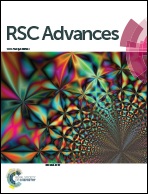Facile synthesis of 2,2′-dinitrosubstituted biaryls through Cu-catalyzed ligand-free decarboxylative homocoupling of ortho-nitrobenzoic acids†
Abstract
A novel waste-free Cu-catalyzed decarboxylative homocoupling of ortho-nitrobenzoic acids has been developed, and diverse substituents on the phenyl core of ortho-nitrobenzoic acid are compatible with the transformation. This method provides a practical alternative to synthesize valuable 2,2′-dinitrosubstituted biaryls from cheap and readily available ortho-nitrobenzoic acids.


 Please wait while we load your content...
Please wait while we load your content...